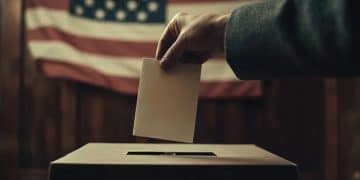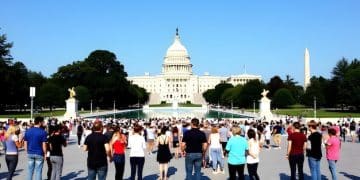Supreme Court & 2026 Elections: How Voting Rights are Changing
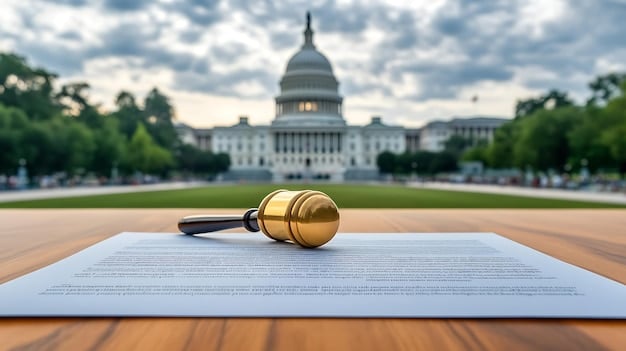
The Supreme Court’s rulings on voting rights are poised to reshape the electoral landscape for the 2026 elections, potentially impacting voter access, redistricting processes, and the overall fairness of elections across the United States.
The upcoming 2026 elections are set to occur in a vastly different legal environment due to recent Supreme Court rulings on voting rights. Understanding the implications of these decisions is crucial for voters, policymakers, and anyone invested in the democratic process. This article explores the key changes stemming from the Supreme Court Ruling on Voting Rights: What Are the Key Changes for the 2026 Elections?
Understanding the Shift in Voting Rights Laws
The Supreme Court’s role in shaping voting rights in the United States is pivotal. Recent rulings have altered the landscape, influencing how states can regulate elections, and affecting the protections previously afforded under landmark legislation like the Voting Rights Act. These shifts are not just legal technicalities; they have real-world implications for who gets to vote and how easily they can do so.
Key Supreme Court Cases and Their Impact
Several landmark cases have contributed to the current state of voting rights law. Examining these cases provides critical context for understanding the changes to come. Each decision has chipped away or reinforced aspects of voting rights, setting precedents that guide lower courts and state legislatures.
- Shelby County v. Holder (2013): This case significantly weakened the Voting Rights Act by eliminating the preclearance requirement for states with a history of discrimination.
- Brnovich v. Democratic National Committee (2021): The Court upheld Arizona’s voting restrictions, setting a high bar for challenging state voting laws under Section 2 of the Voting Rights Act.
- Other Relevant Cases: Cases involving redistricting, voter ID laws, and mail-in voting have further defined the boundaries of permissible state regulation of elections.
These rulings have led to a more fragmented and contested legal environment, with ongoing litigation across the country challenging various state-level voting laws.
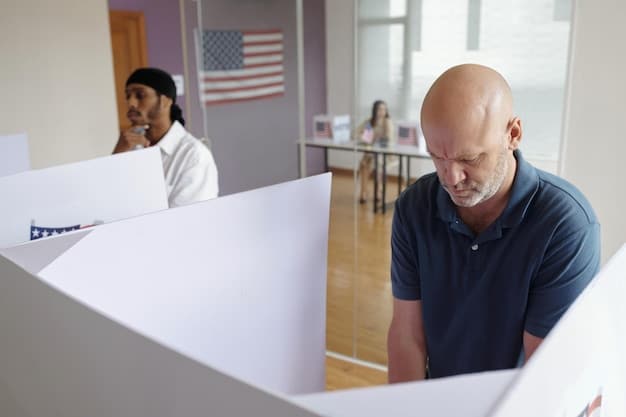
Impact on Voter Access and Registration
One of the most direct consequences of the Supreme Court’s rulings is its influence on voter access and registration. States have increasingly enacted laws that supporters say are aimed at preventing fraud, while opponents argue they disproportionately affect minority voters and those with limited resources.
Changes in Voter ID Laws
Many states have implemented stricter voter ID laws, requiring specific forms of photo identification to vote. These laws have been challenged as discriminatory, particularly against low-income individuals and communities of color, who may have difficulty obtaining the required IDs. The debate over voter ID laws continues, with legal challenges ongoing in several states.
Restrictions on Mail-In Voting
The expansion of mail-in voting during the COVID-19 pandemic led to increased scrutiny and attempts to restrict its use. Some states have limited who can vote by mail, added requirements for signature verification, or reduced the number of drop boxes available. These changes have raised concerns about voter suppression and the potential for long lines at polling places.
The impact of these laws is particularly significant in states with large minority populations or a history of voter suppression, where even minor barriers to voting can have a substantial effect on turnout.
Redistricting and Gerrymandering Challenges
Redistricting, the process of redrawing electoral district boundaries, is another area where the Supreme Court’s decisions have had a profound impact. Gerrymandering, the practice of drawing district lines to favor one political party, has long been a controversial issue in American politics. The Supreme Court has wrestled with cases involving gerrymandering, but has largely avoided setting strict limits on the practice.
The Legal Standards for Redistricting
The Supreme Court has established some broad principles for redistricting, including the requirement that districts be roughly equal in population and that they not discriminate on the basis of race. However, the Court has been less clear on how to address partisan gerrymandering, leaving the issue largely to the states.
Potential for Politically Motivated Districts
Without strong judicial oversight, there is a significant risk that redistricting will be used to create politically motivated districts that entrench one party in power. This can lead to less competitive elections and a less responsive government. The impact of gerrymandering is felt most acutely in states with closely divided populations, where even small changes in district lines can have a major impact on election outcomes.
- Ensuring fair representation
- Promoting competitive elections
- Protecting minority voting rights
The struggle for fair redistricting is ongoing, with legal challenges and ballot initiatives seeking to reform the process in many states.
Campaign Finance Regulations and Their Influence
Campaign finance regulations play a crucial role in shaping the electoral landscape. The Supreme Court’s decisions on campaign finance have significantly altered the rules of the game, leading to debates about the influence of money in politics and the fairness of elections.
Citizens United and Its Aftermath
The Citizens United decision, which held that corporations and unions have the same First Amendment rights as individuals to spend money in political campaigns, has had a particularly significant impact. This ruling has led to the rise of Super PACs and other independent expenditure groups, which can spend unlimited amounts of money to support or oppose candidates.
Impact on Political Spending
The influx of money into political campaigns has raised concerns about the potential for corruption and the unequal access to political influence. Critics argue that wealthy donors and special interests have too much sway in elections, while supporters contend that campaign finance regulations infringe on free speech rights. The debate over campaign finance reform is likely to continue for years to come.
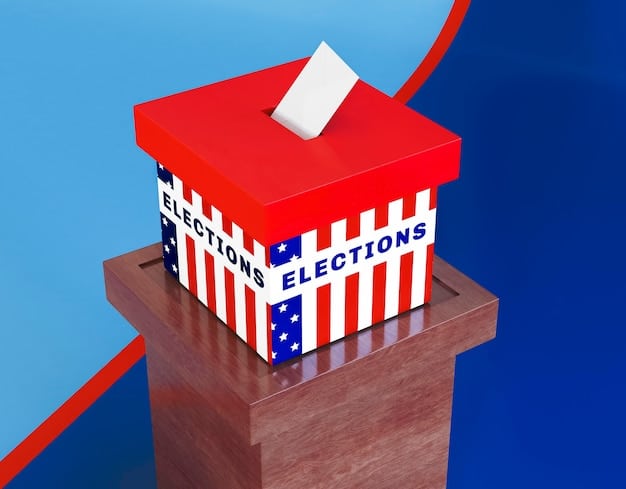
State Responses and Legislative Actions
In response to the Supreme Court’s rulings, many states have taken legislative action to either expand or restrict voting rights. These actions reflect the deep partisan divisions over election law and the ongoing struggle for control of the electoral process.
Enacting New Voting Laws
Some states have enacted laws that make it easier to vote, such as automatic voter registration, same-day registration, and expanded early voting. Other states have passed laws that make it harder to vote, such as stricter voter ID requirements, limits on mail-in voting, and restrictions on registration drives. These divergent approaches have created a patchwork of voting laws across the country, with significant disparities in voter access depending on where you live.
Legal Challenges and Ongoing Litigation
Many of these new voting laws have been challenged in court, leading to ongoing litigation and uncertainty about the rules of the game for the 2026 elections. The outcome of these legal battles could have a major impact on voter turnout and election outcomes.
- Expanding voter access
- Restricting voting rights
- Adapting to new legal frameworks
Understanding these state-level responses is essential for navigating the evolving landscape of voting rights in the United States.
Looking Ahead: The 2026 Elections and Beyond
As the 2026 elections approach, it is crucial to understand the implications of the Supreme Court’s rulings on voting rights. These decisions will shape the electoral landscape and influence the outcome of elections at all levels of government. Vigilance, advocacy, and informed participation are essential for ensuring that all citizens have the opportunity to exercise their right to vote.
The Role of Voters and Advocates
Voters, advocates, and policymakers all have a role to play in protecting voting rights. By staying informed about the issues, engaging in advocacy, and participating in elections, citizens can help ensure that the democratic process remains fair and accessible to all.
Preparing for the Future
Looking ahead, it is clear that the struggle for voting rights will continue. Adapting to new legal frameworks, challenging discriminatory laws, and advocating for reforms that expand access to the ballot box are essential for preserving the right to vote for all Americans. The 2026 elections will be a crucial test of the resilience of American democracy.
| Key Point | Brief Description |
|---|---|
| ⚖️ Supreme Court Rulings | Significant decisions impacting voting rights laws nationwide. |
| 🆔 Voter ID Laws | Stringent ID requirements affecting voter access, notably for minorities. |
| 🗳️ Mail-In Voting | Restrictions and debates around the ease and security of mail-in ballots. |
| 🗺️ Redistricting | Concerns over gerrymandering and its impact on fair representation. |
Frequently Asked Questions
▼
The Shelby County v. Holder decision in 2013 struck down Section 5 of the Voting Rights Act, which required certain states with a history of discrimination to obtain federal approval before changing their voting laws.
▼
Voter ID laws require voters to present identification at the polls. Proponents say they prevent fraud, while critics argue they disproportionately affect minority and low-income voters who may lack required IDs.
▼
Gerrymandering is the practice of drawing electoral district boundaries to favor one political party. It can lead to less competitive elections and a less responsive government by entrenching one party in power.
▼
Citizens United allowed corporations and unions to spend unlimited money in political campaigns, leading to a surge in independent expenditures and Super PACs, and raising concerns about the influence of money in politics.
▼
Protecting voting rights requires vigilance, advocacy, and informed participation. Voters and advocates must stay informed, engage in advocacy, and support reforms that expand access to the ballot box.
Conclusion
The Supreme Court Ruling on Voting Rights: What Are the Key Changes for the 2026 Elections? are poised to significantly reshape the American electoral landscape. By understanding these changes and actively engaging in the democratic process, citizens can play a vital role in ensuring fair and accessible elections for all.
